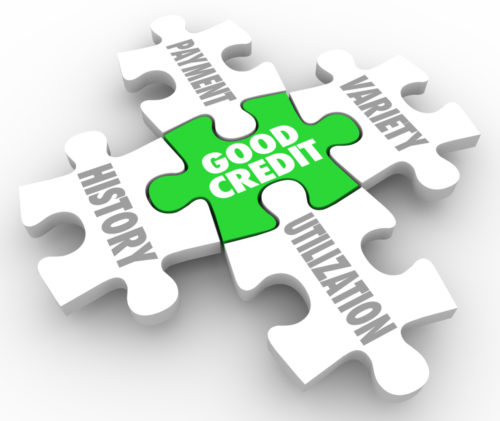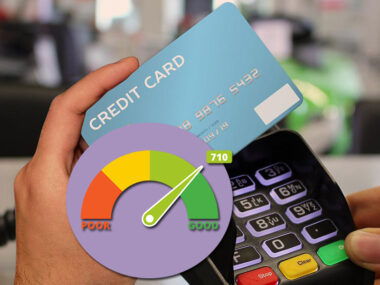If you’re new to credit scores and trying to understand the justification behind your score, a lot of complex terms can get thrown around. One of them is “credit utilization.” It’s usually measured as a ratio, comparing how much credit is available to you against how much of it you are using. Read on to better understand what credit utilization means, how it affects your credit score, and how to control it.
Table of Contents
What is Credit Utilization?
Credit utilization describes, in the simplest language possible, the amount of available credit that you’re using. It covers all of your sources of available credit, but it’s easiest to think about it in terms of one number, as an example:
If you only have one credit card, and the limit of that card is $2,000, then you have $2,000 of available credit. If you purchase something for $500, then you are utilizing $500, or about one quarter of your total available credit. This is known as credit card utilization. However, total credit utilization is actually slightly different from the utilization rate for a single card.
It’s rare for someone to have only one source of credit; most people have multiple credit cards, but there are more types of credit than credit cards. “Credit” in this case does not include loans, like your mortgage or auto loans. It does include home equity lines of credit (HELOCs), lines of credit issued by retailers (such as a jewelry or furniture store that has a payment plan, but does not issue a physical credit card), and bank lines of credit. The best way to tell if you are dealing with credit or a loan, is that credit is revolving — once you pay it back, credit becomes available to you to use again.
Credit Utilization Ratio
To find your credit utilization ratio, scoring technology aggregates all your sources of credit to find your total available credit. Then they identify how much of that credit you’re using. The more of your available credit that you’ve borrowed and spent, the higher the ratio. Generally, high ratios mean a lower credit score, and a lower ratio means a higher credit score.
Credit Utilization and Your FICO Credit Score
The logic behind credit utilization as it relates to your credit score is that the more credit you carry over month over month (as opposed to immediately paying it off each month), the riskier a borrower you appear to lenders. If your credit is maxed out, or close to it, you are considered to be high risk because you have fewer financial resources to pay back new credit. On the other hand, if your utilization ratio is fairly low, your score can be positively affected. You are considered less of a risk with low utilization because your finances appear to be more stable, and you appear more able to pay off new debt.
Just because having a low credit utilization rate is good, doesn’t mean you shouldn’t use credit at all. Credit scores are built on history. If you never use any of your available credit, then the algorithms have no payment history on which to base your score. The best habit to be in is to only spend as much in credit as you can afford to repay each month. This ensures you don’t carry a balance and avoid paying interest, but allows you to show a healthy repayment history. Credit utilization is not inherently bad, the scoring companies look for a healthy balance of borrowing and paying off.
How to Manage Your Credit Utilization Rate
Managing your credit utilization rate is all about finding the right balance. You don’t need to have no debt at all, in fact having a healthy amount of debt can be beneficial. If you are using a large amount of your available credit, however, you might want to find ways to reduce this ratio. You may wish to use multiple methods to improve your utilization rate, which can include:
Paying Down Your Debts
- Less Revolving Debt = A Better Utilization Rate.
If you struggle with credit card debt and carry a high balance on your cards, you’re likely already worried about your debt for other reasons — like the interest charges. Paying off your debt helps in so many ways, including getting you out from under the constant pressure of unmanageable payments. With some planning and careful budgeting, it’s entirely possible to pay off high credit card debt, relieve the pressure, and start improving your credit score by reducing your credit utilization.
Increasing Your Available Credit
- More Available Credit = A Better Utilization Rate.
- Apply for limit increases on existing cards.
- Add new credit lines to your portfolio.
This can be tricky. If your score isn’t good enough, it might be difficult to get approved. If you have problems with spending, this method can also hurt you. The point of applying for more credit is to increase the amount of unused credit in your portfolio. The important thing is not to use this new credit, or at the least, not to use it very much.
Balance transfers can be a great way to do this. Many credit cards offer promotional interest rates on new accounts when you make a balance transfer. This is a way of getting the best of both worlds: increasing your available credit with a new account, and managing existing debt with a lower interest rate. Just beware the terms of these agreements; when a promotional period ends, many companies retroactively apply a higher interest rate to the entire amount if you hadn’t paid it off in time.
It’s also important to remember that if you already have a high credit limit, lenders may hesitate to offer you more credit. They often have their own policies, and so might deny you if they think you have too many open accounts or too high of a credit limit, even if your score is good.
Monitoring and Controlling Your Spending
- Less Spending on Credit = Lower Utilization
The less money you put on credit, the easier it will be to reduce your debt and achieve a better ratio. Try to stick to a monthly spending plan, and avoid using your credit cards for everyday shopping unless you can consistently pay off the entire balance every month.
Adding Lines of Credit
- More Available Credit = Lower Total Utilization
Try to spread your new credit use out over multiple accounts. For instance, applying for a HELOC or a second (or even third) credit card can give you access to more credit. Spend responsibly, spreading a little onto your different accounts, and your overall utilization should go down. Be mindful, however: new credit requests often do a “hard pull” on your credit score, which can adversely affect it and cause lenders to question why you’re opening so many new accounts. Be deliberate about applying for new lines of credit. Likewise, don’t take your expanded access to credit as an invitation to spend more. Set and stick to your budget, but spread your spending out across the multiple lines of credit to enjoy the benefits to your credit score without incurring more debt.
Image Source: https://depositphotos.com/





